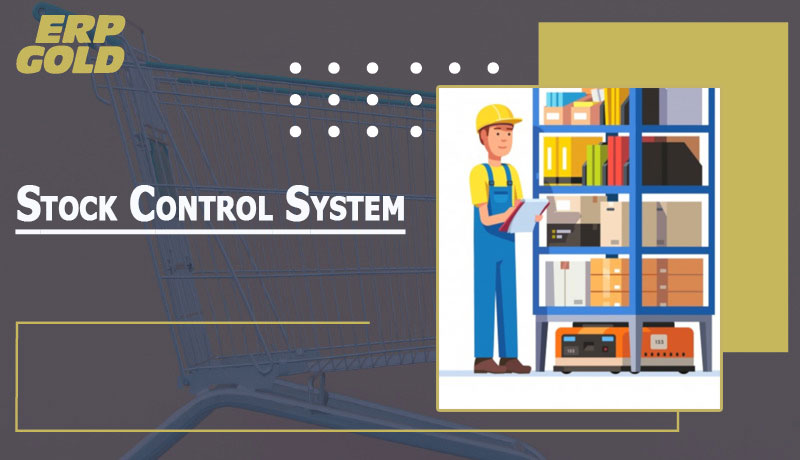A manufacturing company’s success is determined by how successfully it manages its Supply Chain Management process. Because they are working on a tight deadline to finish the order, they rely on their partners and suppliers to provide them with the proper kind and quantity of resources at the right time.
Supply Chain Management (SCM) assures a manufacturing company’s raw material flow. These basic materials are utilized from the manufacturing to the distribution level to create completed goods.
On the other hand, the SCM procedure is time-consuming and inconvenient, and it might slow down output if not appropriately controlled.
What exactly is a supply crunch?
The issue is that the supply chain does not operate only on demand, as some may believe. It has proved to be a fragile network, with many strong and weak links in the chain, driven by people, trucks, trains, aircraft, machines, and circumstances, some good but primarily terrible.
And each link in the chain has the potential to flex or even shatter at any point. If there is one apparent reality, supply chain challenges have been grossly underappreciated during the last two years.
Links were bending and breaking throughout the epidemic. This is still occurring in certain circumstances, and some are being fixed while others are deteriorating. Despite the tireless efforts of devoted specialists working around the clock to deliver you the goods you need. When you desire something and don’t get it, it’s not because you didn’t try or put out any effort.
Pandemic-related supply chain disruptions, both nationally and worldwide, have caused issues worldwide, including backlogs at manufacturing factories and shipping ports. It’s challenging to find someone who hasn’t been impacted somehow.
Why supply chain crunch is happening?
According to research released Thursday by trade credit insurer Euler Hermes, global supply chain disruptions might last until the second half of next year.
Euler Hermes highlighted increasing viral outbreaks, China’s zero-Covid policy, and projected trade volatility around the Lunar New Year as reasons for the downgrade.
Containment measures for Covid-19 may disrupt production and shipping activities, worsening the supply chain issue. Analysts have already warned that the latest form, omicron, might disrupt supply networks further.
According to Euler Hermes analysts, production deficits account for 75% of the present decline in global trade volume, while logistic constraints account for the remaining 25%.
However, this supply chain turmoil is expected to diminish in the second half of 2022 for three reasons, according to the report’s authors.
- The level of consumer demand has peaked.
Consumers are expected to continue purchasing items at greater levels, but demand, according to the insurer, has peaked.
According to the analysis, although surplus funds built during the epidemic have not been spent, demand will eventually normalize.
“The significant household spending shift toward (durable) products rather than services in the context of curfews and lockdowns should be considerably more cautious moving ahead, even in the worst-case scenario of recurring Covid-19 breakouts,” according to the research.
- Restoring inventories to pre-Covid levels
According to the research, after cutting stockpiles in early 2020, producers hurried to refill to meet the unusual surge in demand.
“The good news is that the need to resupply has peaked in recent months… “And inventories are already higher than pre-crisis long-term norms in most industries,” it stated.
- Expanded shipment capacity
According to the insurance, shipping congestion should be less severe in the second half of 2022 as capacity increases.
Shipping costs may stay high next year, but capacity is expected to rise as worldwide orders for new container ships reach record highs, accounting for 6.4 percent of the current fleet, according to Euler Hermes.
“The fast-rising additional transportation capacity orders… should become operational by the end of 2022, greatly alleviating shipping bottlenecks,” it stated.
Global commerce expansion
According to the research, global trade volumes would increase by 5.4 percent in 2022 and 4 percent in 2023, after an 8.3 percent increase in 2021.
However, trade imbalances may worsen. According to Euler Hermes’ estimates, the United States would have record-high trade deficits, while China would have a record-high trade surplus.
How long will the supply shortage last?
Overall, the global supply bottleneck is driven by several factors, including increased demand from the post-pandemic economic recovery, pandemic-related supply chain distortions, collective hoarding by firms worldwide, and geopolitical disturbances.
However, this is not a massive increase in aggregate global demand but rather a distortion of the current system as it gets disturbed and shattered. According to the present circumstances, this tight supply situation will endure long, causing raw material and component prices to climb. As a result, both businesses and governments must be prepared for this eventuality in the medium and long term.
Functions that help in sorting out these issues
When it comes down to it, fulfilling rising demand with fewer staff and a disrupted supply chain implies one thing: boosting operational efficiency is required. That is our area of expertise at ERP Gold. We’ve been doing it from many years.
But it isn’t easy. Sure, everyone wants to do more with fewer resources. But, precisely, how? Here are several methods we’ve discovered that work well for uncovering hidden potential for increased efficiency.
Activate the line. This entails getting up up and personal with anybody involved in the manufacturing line, mining their knowledge of what works and what doesn’t, and scrutinizing the task hour by hour. You’d be shocked what you can discover if you looked at the business through that perspective.
Establish a clear grasp on capacity. How much can truly be produced? And how long will it take?
- Rethink your personnel strategy. How many people will it actually take to complete the task? Looking at the business through the lens of people power, you may discover that you can get the task done with fewer staff. Current is excellent news for businesses who are rushing to fill positions amid this hiring crisis.
- Inspect the management operating system. This relates to how you organize your work, delegate it, and follow up to guarantee the project is completed. Make this a well-oiled machine in your company.
Get serious about throughput. What is the optimal “rhythm” of your manufacturing line? Is everything going at the proper pace? But it’s not just about speed. It is all about generating a high-quality product as quickly as possible.



